by Paul Levine
An eminent European-based scholar of American Studies who has spent nearly a decade in China provides us with his look at the challenge and opportunity that is 21st century China.–Ed.
Recent actions by the Chinese government have puzzled many in the West. After decades of announcing China’s “peaceful rise” to greater affluence suddenly the Chinese government shows signs of belligerence in several areas. The regime’s violent reaction to the awarding of the Nobel Prize to a dissident, Liu Xiaobo, is only one example. A rising military budget, expanded territorial disputes with its neighbors and increased repression of domestic critics all point to a hardening of governmental policy. There has been a western reassessment of China’s future global role. How can we understand these developments?

The End of History?
We can begin in the crucial year of 1989. Just after the fall of the Berlin Wall, Francis Fukuyama published a celebrated essay entitled “The End of History?” Three years later, he enlarged it into a book with a more emphatic title, The End of History and the Last Man (1992). Fukuyama argued that with the collapse of communism, the age of ideology had come to an end. “At the end of history, there are no serious ideological competitors left to liberal democracy,” he wrote. “In our grandparents’ time, many reasonable people could foresee a radiant socialist future in which private property and capitalism had been abolished, and in which politics itself was somehow overcome. Today, by contrast, we have trouble imagining a world that is radically better than our own, or a future that is not essentially democratic and capitalist.”
Fukuyama’s formulation proved popular in the West. It provided an explanation for major changes brought about by the collapse of communism after 1989. Western triumphalism grew at the end of the last century as the “color revolutions” transformed nations in Eastern Europe and Central Asia. It seemed the march of history would roll over other dictatorships as well.
 Both Democratic and Republican presidents repeated Fukuyama’s mantra in their vision of China’s future. Bill Clinton said that economic changes in China would help to “increase the spirit of liberty over time . . . I think it’s inevitable, just as inevitably the Berlin Wall fell.” George W. Bush concurred. “Economic freedom creates habits of liberty. And habits of liberty create expectations of democracy” he said. “Trade freely with China and time is on our side.” Influential pundits like Tom Friedman agreed. “China’s going to have a free press,” he predicted in The Lexus and the Olive Tree (1999). “Globalization will drive it.” This view was shared by noted China scholars like Michel Oksenberg who said in 1996, “I am tempted to suggest that China’s paramount leader will (by 2010) have either been directly elected or selected via an elected, multi-party national parliament.”
Both Democratic and Republican presidents repeated Fukuyama’s mantra in their vision of China’s future. Bill Clinton said that economic changes in China would help to “increase the spirit of liberty over time . . . I think it’s inevitable, just as inevitably the Berlin Wall fell.” George W. Bush concurred. “Economic freedom creates habits of liberty. And habits of liberty create expectations of democracy” he said. “Trade freely with China and time is on our side.” Influential pundits like Tom Friedman agreed. “China’s going to have a free press,” he predicted in The Lexus and the Olive Tree (1999). “Globalization will drive it.” This view was shared by noted China scholars like Michel Oksenberg who said in 1996, “I am tempted to suggest that China’s paramount leader will (by 2010) have either been directly elected or selected via an elected, multi-party national parliament.”
The systemization of ideas of a “free-market democracy” developed after 1989 into the Washington Consensus: an ambitious program of economic reforms involving liberalization, deregulation, privatization, free trade, tax reform and fiscal discipline. This program influenced IMF and World Bank policies in the developing world and became the dominant model in shaping the process of economic globalization. Partisans of the Washington Consensus believed we were marching toward “the end of history.”
 Meanwhile the significance of the communist disasters at Tiananmen Square, the Berlin Wall and the Kremlin were not lost on China’s rulers. As David Shambaugh notes, “after a period of catharsis in the early 1990s, following the cataclysmic events of 1989 . . . the CCP [Chinese Communist Party] undertook very systematic assessments of the causes of collapse of these other ruling parties, as well as analyzing the range of internal and external challenges to itself.” In China’s Communist Party: Atrophy and Adaptation (2008), Shambaugh shows how the Party embarked on a decade-long re-evaluation of world communism. “While reacting to the events in former communist party-states, the CCP has been very proactive in instituting reforms within itself and within China. The reforms have been sweeping in scope and have collectively been intended to strengthen the party’s ruling capacity.” The goal was to devise a strategy that would develop the Chinese economy while preserving the Leninist political hegemony of the CCP. Indeed, the conclusion underlined the connection between these two goals: only by improving the economy and limiting political liberty could the CCP guarantee its survival in the 21st century.
Meanwhile the significance of the communist disasters at Tiananmen Square, the Berlin Wall and the Kremlin were not lost on China’s rulers. As David Shambaugh notes, “after a period of catharsis in the early 1990s, following the cataclysmic events of 1989 . . . the CCP [Chinese Communist Party] undertook very systematic assessments of the causes of collapse of these other ruling parties, as well as analyzing the range of internal and external challenges to itself.” In China’s Communist Party: Atrophy and Adaptation (2008), Shambaugh shows how the Party embarked on a decade-long re-evaluation of world communism. “While reacting to the events in former communist party-states, the CCP has been very proactive in instituting reforms within itself and within China. The reforms have been sweeping in scope and have collectively been intended to strengthen the party’s ruling capacity.” The goal was to devise a strategy that would develop the Chinese economy while preserving the Leninist political hegemony of the CCP. Indeed, the conclusion underlined the connection between these two goals: only by improving the economy and limiting political liberty could the CCP guarantee its survival in the 21st century.
Three Scenarios
Fukuyama’s prophesy of “the end of history” after the Cold War did not materialize. Instead, we witnessed increasing ideological divisions between West and East that led to a change of attitude among American politicians and opinion makers. In The China Fantasy (2007), James Mann outlines three contrasting American perspectives on China’s future. The first he calls the Soothing Scenario because it reaffirms core American values: as China’s economy expands, a new urban middle class grows who will peacefully demand more political freedom. This is the preferred scenario of “the political, financial, and intellectual elites over the past two decades,” says Mann. “For their own different reasons, the U.S. government and American (or multinational) corporations have been eager to conduct as much business as possible with China. In order to do this, they have sought to minimize the core issues of repression of dissent and China’s one-party political system. And so an elaborate idiom has been developed for talking about the world’s most populous country while avoiding these inconvenient issues.”
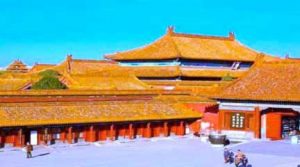
Mann is critical of the failure of American elites to face the inconvenient truth of China’s dictatorship. One scholar in China explains: “Laws in China are used as a tool of the government to control the society rather than as a tool of the society to control the government.” The regime has moved from totalitarian rule under Mao Zedong to an authoritarian system under Hu Jintao, but it still resorts to terror when necessary. Fear of the state, says another Chinese scholar, is “deeply ingrained . . . in the minds of the Chinese people.” No wonder a Chinese psychiatrist told a friend of mine, “Every Chinese has fear in his heart.”
A second version is less soothing; Mann calls it the Upheaval Scenario. It “predicts that China is headed for some sort of disaster, such as economic collapse or political disintegration, because it won’t be able to maintain political stability while continuing on its current course.” China’s economic expansion will either reach a point of stagnation or create a level of social inequality and environment degradation, which the Party can no longer control. As economic growth gets out of hand, social relations fall apart, the Party cannot prevail and the country begins to break up into regional enclaves. The Upheaval Scenario is encapsulated in the title of Gordon Chang’s book, The Coming Collapse of China (2001). Chang wrote: “As time passes, the underlying problems fester. Economic dislocations become social ones, with dark political overtones. At some point there will be no solution. Then the economy, and the government will collapse. We are not far from that time.”
There are problems with both scenarios. First, the Upheaval Scenario runs counter to the mainstream of Chinese history in envisioning the breakup of the country. Second, there is little empirical evidence that China is already imploding. Despite serious social and environmental problems, the economy is booming and a new middle class is expanding. Finally, the assumption that the creation of a middle class leads inexorably to the demand for more democracy runs counter to historical experience. As Kellee S. Tsai demonstrates in Capitalism without Democracy (2007) Chinese entrepreneurs have not lined up with reform elements in China. They are too busy making money. Tsai says, “The belief that capitalists must demand democracy is a myth, not a law of social science. Historically, the processes that lead to democratization are highly contingent and involve a multiplicity of actors and institutions. China is no different in this regard, so debunking this popular myth is not difficult.”

The Third Scenario
But what if China neither democratizes nor collapses? Is a third scenario possible? Mann says, “we should not assume China is headed for democracy or far-reaching political liberalization. China will probably, instead, retain a repressive one-party political system for a long time.” Then he adds, “In fact, such an outcome may not bother the American and European business and government leaders who deal regularly with China; it may indeed be just the China they want. But they rarely acknowledge that they would be content with a permanently repressive and undemocratic China, not in public or to large audiences, because doing so would undercut public support for their policies. Instead, they foster an elaborate set of illusions about China, centered on the belief that commerce will lead inevitably to political change and democracy.”
In other words, the economy will continue to expand while the Party monopolizes political power without outside interference. The Third Scenario suggests that the CCP will find ways to maintain control for the indefinite future. This view is cogently argued in Minxin Pei’s China’s Trapped Transition (2006). Pei shows how the transition from dictatorship to democracy in Taiwan and South Korea is not happening in China because the CCP refuses to share power. Instead, China’s political “transition” is “trapped” between the Party’s desire to decentralize the economy and its need to centralize political power in its own hands. The result is a paralysis of the will to reform. Pei concludes, “the party’s resistance to substantive and meaningful democratic reforms had led to the breakdown of accountability, deterioration of internal norms, and exclusion of large segments of Chinese society from political participation.”
Pei is supported by an unlikely source: Zhao Ziyang, the reformist premier who was deposed during the Tiananmen crisis in 1989. “The problem is, the CCP is a party built on the basis of Leninism,” said Zhao. “It controls all the resources of the country . . . under a market economy, after property becomes legitimate and legal, the CCP inevitably becomes corrupt. Those with power will certainly use their control of the resources to turn society’s wealth into their private wealth. These people have become a huge entrenched interest group.” So Zhao concluded: “What China has now is the worst form of capitalism. Western capitalism in its early phase was also bad, but it could gradually become more progressive. But the worst form of capitalism in China today is incapable of becoming more progressive.”
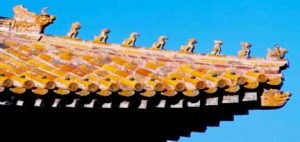
The rampant corruption that Zhao predicted is now the major problem facing the Party. Indeed, pervasive corruption across the nation threatens the welfare of the system as government officials and their offspring rush to fulfill Deng Xiaopeng’s admonition to get rich. Pei cites evidence of massive official corruption in 16 different provinces. In one instance, he says, “The provincial government itself could qualify as a mafia state.” How to fix this is not apparent as long as the CCP is answerable only to itself. There is a popular saying in China: ”If we don’t root out corruption, the country will perish; if we do root out corruption, the Party will perish.”
Unlike Gordon Chang, Pei does not predict the coming collapse of the CCP. Instead he foresees a longer period of social and political stagnation. Susan Shirk, another China expert formerly in the Clinton administration, concurs. She says, “China’s leaders find a troubling paradox. The more developed and prosperous the country becomes, the more insecure and threatened they feel. The PRC today is a brittle, authoritarian regime that fears its own citizens and can only bend so far to accommodate the demands of foreign governments.” But many western observers continue to indulge in the China Fantasy. In this context, Shirk recounts a telling anecdote. When she published her book entitled China: Fragile Superpower in 2008, her American colleagues asked: why do you call China fragile? Her more knowledgeable Chinese counterparts asked: why do you call China a superpower?
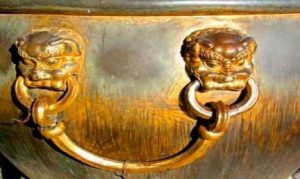
The history of China’s meteoric rise to world power is intimately connected with the triumphalist narrative of the Party. The CCP was founded in 1921 by a handful of urban intellectuals in Shanghai. But it soon became clear that China’s backward economy could not produce a significant industrial proletariat to lead the revolution predicted by Marx. Instead peasants in this predominately rural society would lead it. This was Mao Zedong’s great insight as he gained control of the movement. In 1949, after two decades of civil war and Japanese occupation, Mao triumphantly established the People’s Republic of China (PRC).
Mao was a utopian visionary who believed that revolution should not only transform the nation but also change human nature itself. In 1958 he said: “China’s 600 million people have two remarkable peculiarities; they are, first of all, poor, and secondly, blank. That may seem like a bad thing but it is really a good thing. Poor people want change, want to do things, want revolution. A clean sheet of paper has no blotches, and so the newest and most beautiful pictures can be painted on it.” Thus the decisive role of the Party was to create a new Chinese body politic. But Mao’s erratic utopian policies created more instability as he sought to enforce social and political uniformity. After the debacle of the Great Leap Forward, in which 30 million peasants died of starvation, Mao fell from favor in 1959. But when the Party tried to redress his disastrous economic policies in the early 1960s, Mao staged a comeback by harnessing the terrible energies of school children and college students against the “revisionist” policies of the new Party leadership.
This was the beginning of the Great Proletarian Cultural Revolution, which, says historian Roderick MacFarquhar, “was a watershed, the defining decade of half a century of Communist rule in China.” Thus in the late 1960s, while youthful revolutionary romantics were defiantly raising copies of Mao’s Little Red Book in Paris and Rome, China was tearing itself apart. Literally. Even today in China, the regime forbids open discussion of the Cultural Revolution and its grievous consequences. Millions of people were displaced, disgraced, tortured, killed.
The full extent of the national trauma remains undocumented; but speak to almost any Chinese of middle age and he will tell a harrowing tale. Lin Biao, Mao’s protégé, urged the young to attack “The Four Olds: old ideas, culture, customs, and habits of the exploiting classes.” The assault on Chinese tradition resulted in the desecration of libraries, temples, even national landmarks. In Shandong province, 200 teachers and students from Beijing Normal University pillaged the revered Confucius Temple. In Beijing, the campus of prestigious Tsinghua University became the site of a war between armies of students using clubs and machine guns. When the government sent a delegation to intervene in the fighting, the combatants turned on them and killed them.

Soon Mao lost control of the revolution he had initiated. In The Sixties Unplugged (2008), Gerard DeGroot explains, “In the beginning it was rooted in coherent revolutionary theory, but the zeal it inspired quickly overwhelmed ideology, not to mention government control.” The brutality is hard to imagine. “Simply killing an enemy was not enough; in order to demonstrate loyalty to Mao, citizens competed with each other in imaginative acts of brutality. In places, this meant eating the enemy, which supposedly fortified revolutionary zeal.” DeGroot reports that in Quangxi province, over 200,000 “enemies” were murdered and 3,000 were ritually cannibalized. “At the height of the violence, the cafeteria of the Wuxuan Revolutionary Committee had human flesh on the menu.”
After the collapse of the Cultural Revolution and the death of Mao, the country was in chaos and the prestige of the CCP was in tatters. When Deng Xiaopeng assumed power in 1978 he changed China’s direction 180 degrees by turning Maoism on its head. Instead of identifying China with the Third World, Deng sought to move the country closer to the capitalist sphere. He created an incipient market economy and called it “Socialism with Chinese characteristics.” Deng sought to release pent-up Chinese energies by announcing, “It’s glorious to be rich.” He proposed “Four Modernizations” to reform Chinese agriculture, industry, defense and science and technology. But when a worker named Wei Jingsheng challenged Deng to add a fifth “modernization”—democracy—he was arrested. Wei was sentenced to 15 years in prison for “inciting counter revolution” and “leaking state secrets.”
Deng supported economic privatization but not political pluralism. Minxin Pei cites a key speech where Deng defined the goals of political reform: “The purpose of reforming the system of the Party and state leadership is precisely to maintain and further strengthen Party leadership and discipline, and not to weaken or relax them.” When the burgeoning pro-democracy movement of students and workers challenged the government in 1989, he urged sending in the army. Deng was the architect of both economic modernization and the Tiananmen Square massacre.
Since then, as noted China scholar Perry Link concludes, “the highest priority of the top leadership of the Communist Party remains, as in the past, not economic development, or a just society, or China’s international standing, or any other goal for the nation as a whole, but its own grip on power.” But the cost of maintaining the party’s monopoly on power has been high for the nation in terms of environmental damage, economic dysfunction, social inequality, regional disparities and a disillusionment, even among party members, with the entire system.
Beijing Consensus
However, in the past two years something interesting has happened. Many observers have begun to challenge the dominant view of China’s stagnation. Instead they see a regime that has successfully survived the current global recession and thereby consolidated its power. Moreover, it has arrived on the international stage as the next superpower and challenged American hegemony by presenting an alternative to the western model of liberal democratic capitalism. In place of the dominant Washington Consensus, says Stefan Halper, China is developing the Beijing Consensus. This argument is repeated starkly in the title of Martin Jacques’s recent book, When China Rules the World: the End of the Western World and the Birth of a New Global Order (2009).
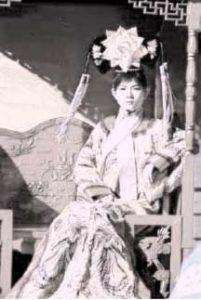 This view is best stated in Stefan Halper’s The Beijing Consensus (2010). In his view, China’s astonishingly successful experiment in rapid modernization offers an attractive alternative to some developing countries. “China is the protagonist in a clash of values, governance, and two versions of modernity in the twenty-first century,” says Halper. “On one side are the Western liberal founders of the global marketplace. These actors take for granted their political and economic preeminence in the world they constructed after 1945. On the other side are the new non-Western market converts, from Asia to Latin America, which have learned how to extract the best from both market capitalism and one-party government, thus shattering the illusion that capitalism begets democracy.”
This view is best stated in Stefan Halper’s The Beijing Consensus (2010). In his view, China’s astonishingly successful experiment in rapid modernization offers an attractive alternative to some developing countries. “China is the protagonist in a clash of values, governance, and two versions of modernity in the twenty-first century,” says Halper. “On one side are the Western liberal founders of the global marketplace. These actors take for granted their political and economic preeminence in the world they constructed after 1945. On the other side are the new non-Western market converts, from Asia to Latin America, which have learned how to extract the best from both market capitalism and one-party government, thus shattering the illusion that capitalism begets democracy.”
Just as globalization is shrinking the world, says Halper, so China is shrinking the West. The result is a reordering of global values, from the neo-conservatism of Reagan and Thatcher to the neo-authoritarianism of the Beijing Consensus. Moreover, warns Halpern, “these events also signal the end of optimistic expectations about the transformative power of markets to globalize the principles of the European Enlightenment. The marriage of free politics and free economies is being replaced by governments determined to reassert control over their economies, enhancing both their autocratic base and their global influence.”
The Party
While Halper analyzes the Beijing Consensus Richard McGregor anatomizes China’s Leninist system. In The Party: The Secret World of China’s Communist Rulers (2010), he shows how the system works. “The Chinese Communist Party’s enduring grip on power is based on a simple formula straight out of the Leninist playbook,” says McGregor. “For all the reforms of the past three decades, the Party has made sure it keeps a lock-hold on the state and three pillars of its survival strategy: control of personnel, propaganda and the People’s Liberation Army.” The Party’s goal is simply to maintain power. McGregor explains, “State sovereignty, territorial integrity and economic development, the priorities of any state, are all subordinate to the need to keep the Party in power.”
The CCP maintains control by penetrating every aspect of what would normally constitute civil society. A university professor in Beijing says, “The party is Like God. He is everywhere. You just can’t see him.” Like God, the CCP and its branches remain invisible. McGregor notes that the Central Propaganda and Personnel Departments have no listed phone numbers and no identifying sign outside their Beijing headquarters. Yet, as David Shambaugh shows, the propaganda system controls every branch of public life. He cites an official publication that lists the extent of Party oversight. It includes:
newspaper offices, radio stations, television stations, publishing houses, magazines, and other news and media departments; universities, middle schools, primary schools, and other vocational education, specialized education, cadre training, and other educational organs; musical troupes, theatrical troupes, film production studies, film theaters, drama theaters, clubs, and other cultural organs, literature and art troupes, and cultural amusement parks; cultural palaces, libraries, remembrance halls, exhibition halls, museums, and other cultural facilities and commemoration exhibition facilities.
Conclusion
What can we learn from this long story? In the new millennium American attitudes towards China have changed from a mainly positive view mirrored in the Soothing Scenario to a darker view suggested in the Third Scenario. The jailing of dissidents, new restrictions placed on lawyers and NGOs, the intensification of media censorship through the expansion of the Great Firewall and the banning of global internet tools like Google, Facebook, and YouTube suggest that the regime wishes to create a separate, virtual reality with Chinese characteristics for its citizens and “netizens.” This may not be the action of a self-confident great power but it is the policy of a regime determined to retain power.
Another Party leader, Wu Bangquo, soon confirmed the growing consensus that China will not change its one-party dictatorship. Recently, Wu told the rubber-stamp National People’s Congress that China would never reform its political system according to Western principles. “On the basis of China’s conditions, we have made a solemn declaration that we will not employ a system of multiple parties holding office in rotation,” Wu said. “Different countries have different systems of laws, and we do not copy the systems of laws of certain Western countries when enacting the socialist system of laws with Chinese characteristics.”
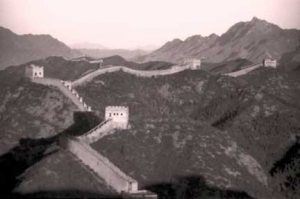
But not everyone agrees. Zhao Ziyang, the reformist Premier and Party Secretary, was unceremoniously fired in 1989 when he rejected the use of force to remove protesters from Tiananmen Square. Zhao was subsequently airbrushed out of Chinese history and spent the next 16 years under house arrest before he died in 2005. Despite CCP efforts, Zhao did not vanish from history. Instead he left a testament: a secret journal that was smuggled out of the mainland and published recently in Hong Kong and the West as Prisoner of the State (2008).
Zhao describes how most authoritarian political systems that thrived in the 20th century have disappeared: fascist dictatorships, absolute monarchies, Marxist proletarian regimes. “In fact, it is the Western parliamentary democratic system that has demonstrated the most vitality. This system is currently the best one available.” Despite its imperfections, says Zhao, this system offers a modern civilization both adaptability and stability. “Of course, it is possible that in the future a more advanced political system than parliamentary democracy will emerge. But that is a matter for the future. At present, there is no other.”
Recommended Reading
Gordon G.Chang, The Coming Collapse of China. NY: Random House, 2001.
Chen Guidi & Wu Chuntao, Will the Boat Sink the Water? NY: Public Affairs, 2006.
Bruce Gilley, China’s Democratic Future. NY: Columbia UP, 2004
Stefan Halper, The Beijing Consensus. NY: Basic Books, 2010.
Peter Hessler, Country Driving. NY: HarperCollins, 2010
Martin Jacques, When China Rules the World. London: Penguin, 2009.
James Kynge, China Shakes the World. NY: Houghton Mifflin, 2006.
David M. Lampton, The Three Faces of Chinese Power. Berkeley: University of California Press, 2008.
Richard McGregor, The Party. London: Allen Lane, 2010.
James Mann, The China Fantasy. London: Penguin, 2008.
Philip Pan, Out of Mao’s Shadow. NY: Simon & Schuster, 2008.
Minxin Pei, China’s Trapped Transition. Cambridge: Harvard University Press, 2008.
David Shambaugh, China’s Communist Party: Atrophy and Adaptation. Berkeley: University of California Press, 2008.
Susan Shirk, China: Fragile Superpower. NY: Oxford University Press, 2007.
Kellee S. Tsai, Capitalism without Democracy. Ithaca: Cornell University Press, 2007.
Zhao Ziyang, Prisoner of the State. NY: Simon & Schuster, 2010.
Paul Levine is Emeritus Professor of American Literature at Copenhagen University. He was born in Brooklyn, attended Wesleyan and Princeton and received a Ph.D. in the History of American Civilization from Harvard. Levine taught at Wesleyan, Rochester and York (Toronto) Universities before becoming the first Professor of American Literature in Copenhagen (1975-2006). He also held the Salgo Chair in American Studies at Eötvös Lorand University in Budapest (1986-9) and directed the annual Athens American Studies Seminar for fifteen years (1994-2009). He publishes widely on literature, art, film and culture. He collaborated with E. L. Doctorow on a volume of the novelist’s Screenplays (Johns Hopkins University Press, 2003) and a new edition of America Since 1945: The American Moment, (with Harry Papasotiriou) was published by Palgrave in 2010. He has twice received royal honors in Denmark and holds the title of Ridder af Dannebrogorden, 1st Kl. (2000).
Levine first went to China in 2001 at the invitation of the State Department to help create a graduate program in American Studies at ECNU (East China Normal University, Shanghai). In 2004 he was awarded a Fulbright Professorship at ECNU for three semesters. After retiring from Copenhagen in 2006, he served as director of regional studies and the new Center for International Studies (2007-11) at Shantou University in Guangdong Province. He and his wife, Lily Varidaki-Levine, now live in Copenhagen and Athens.
 |
|||
